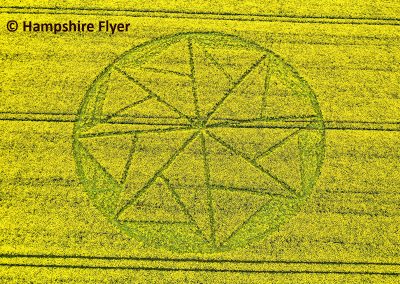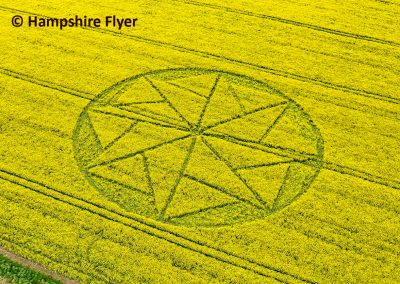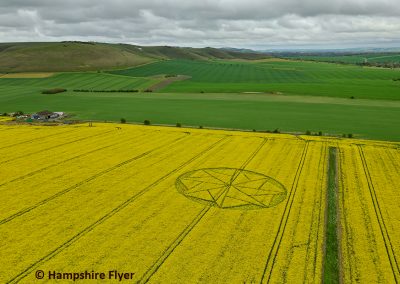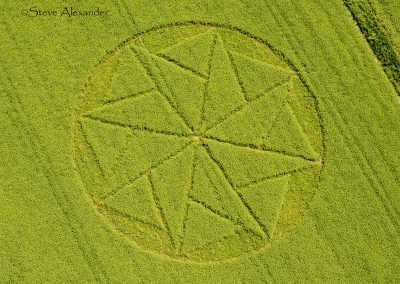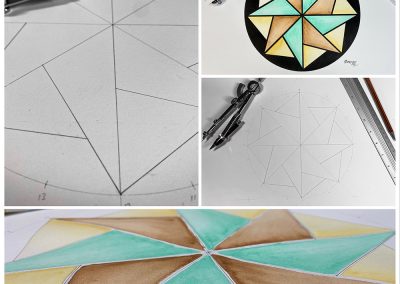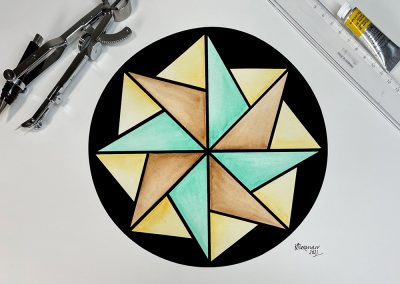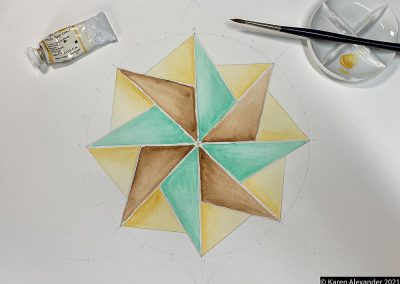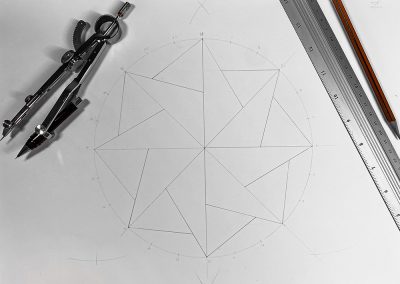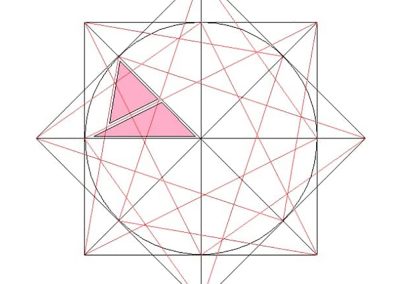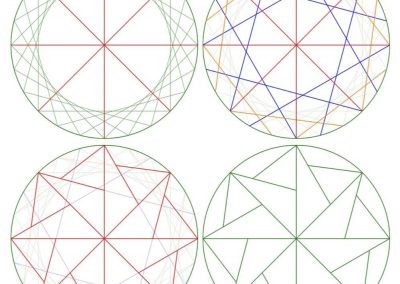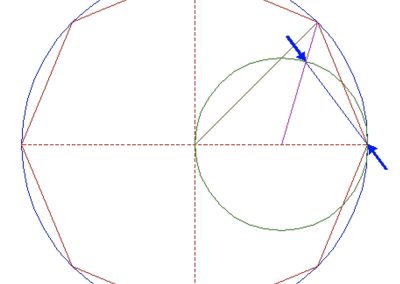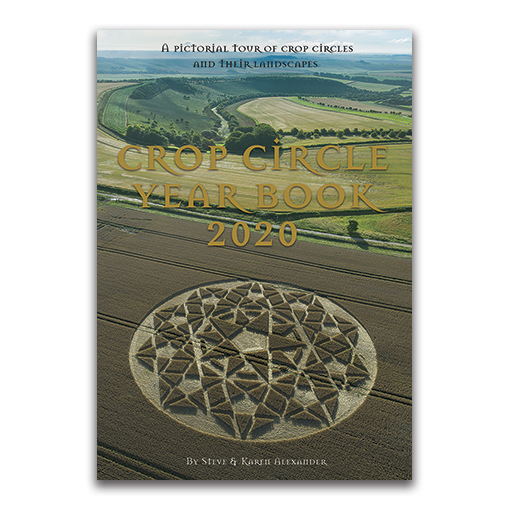Stanton St. Bernard, Wilts.
(between Alton Barnes and Horton)
Detail & Location: This circle was reported on the 10th of May. It is in a field of oilseed rape (canola) and measures approximately 200ft in diameter. See the Google Maps link for precise location. It is the first reported formation in the UK in 2021.
Take Care!!! Oilseed-rape is poisonous to dogs. Please do not take your dog into a rapeseed field.
Crop Circle Reporting and Covid-19: As in 2020, we will not be censoring crop circle locations during the continuing Covid-19 pandemic. We consider the reporting of crop circles to be in the spirit of journalism, and censorship to be an anathema to that spirit. Therefore, we will be treating the crop circle community as adults and asking everyone to approach the information carefully and responsibly. This will include not visiting the circles if the farmer has not given explicit permission to do so and should permission be given adhering to any covid restrictions in place.
Flying during the Covid-19 Pandemic: The UK is coming out of covid restrictions in the UK during the early summer of 2021. However, the restrictions of the past year have had a heavy impact on the aviation industry. Flying will continue to be very challenging for us this year, with access to aircraft and pilots still very restricted. We will continue to cover the season, flying where we can, while continuing to work photographer colleagues to bring you as much coverage as we can. We’d like to extend our deep gratitude to all those who generously share their images with us.
Visiting: As far as we are aware no permission has been given to visit this crop circle. Please do not visit this circle. Thank you.
History & Connections: Stanton St. Bernard lies beneath Milk Hill and its fields have become synonymous with the crop circle phenomenon; there is a vastly rich history of crop circles appearing here. The facing hills are imposing, powerful and full of ancient mystery. The earthworks at Milk Hill and Cliffords Hill are sites of ancient human activity in this area going back thousands of years, man helped shape and sanctify these hills as part of a living landscape in which he saw himself as completely enmeshed. According to folklorist John Wakefield, the hills facing Stanton St Bernard, were seen as a representation of the Goddess, recumbent in the landscape, her breasts at Milk Hill (aptly) and Adam’s Grave, her umbilical cord trailing down Knap Hill (her pregnant belly), flowing into East Field a seminal location for crop circles, if you will permit my metaphor. That the crop circles have appeared here regularly for as long as they have, gives one a sense of them being the children of the Goddess Earth herself. Her belly button atop Knap Hill and the enclosure on the top of the hill are aligned with the sunrise on the summer solstice. All this goes to show that this is sacred land.
Use the this link to visit the history page of the Stanton St. Bernard village website, to read about the history of the village itself.
Design & Symbolism: This is an eight-fold design, which uses triangles to make its many divisions, I can also see eight flags on poles! There will be more information about the geometry of this formation shortly in the Geometry Gallery. I’m very excited to be getting the first formation of the year on my drawing board!
Visiting the Circles? If you are thinking of visiting any crop circles this summer, please read our Visiting the Crop Circles section. It’s full of useful information and etiquette for visiting the countryside and the crop circles. Please remember that you should not enter any fields without the express permission of the farmer and you will need to be aware of and abide by any restrictions in place in the UK in response to the Covid-19 pandemic.
Click here for Copyright Information about the reproduction of images on this website.
Please Help to keep us Flying in 2021: If you have enjoyed looking at our pictures and information please consider making a small donation to keep us flying. There are so few of us left regularly recording the circles it’s really important that we continue. And while some now use drones to record the circles, it is important that there are still images taken from aircraft where the best quality camera equipment can be used and images that include the broad vista of the landscape can be taken. This kind of photography is expensive and it gets harder with each passing year to raise the funds we need to continue our work, but if everyone who regularly looked at this website made a small donation we would meet the funds we need. You can make a donation here.
NOTE: Some of the images below are beautiful landscape scenes. Click on each image to enlarge them and see the whole picture.
IMPORTANT THANKS: to Hampshire Flyer for allowing us to use his images on our website.
UPDATE: You will see in the gallery below an image taken of the Stanton St. Bernard formation Steve took on the 16th of June, over a month since it first appeared. You can see how the crop has continued to grow, which has softened the outline of the design somewhat, but the crop circle still appears to be in great shape!
Image Licencing
We can supply high resolution images of many of our photographs and the sky is the limit as to what they can be used for! Choose from our extensive library or contact us to commission aerial photography for your project.
Geometry Gallery
Many pathways; the same destination
The Stanton St. Bernard Pinwheel 2021
Choices
 It always pleases me when people get involved in drawing the crop circles, if for no other reason than it gets more people involved in drawing the sacred archetypes of the cosmos - a time-honoured and worthy pursuit in its own right.
It always pleases me when people get involved in drawing the crop circles, if for no other reason than it gets more people involved in drawing the sacred archetypes of the cosmos - a time-honoured and worthy pursuit in its own right.
I have no problem with people using computers to draw either, I wish I could do it - but there is also much to recommend drawing with the human hand attached to the human heart.
The reason I mention this is not to make any judgement about how the work is produced - quite the opposite - but because it affords us all the benefits of seeing things from different perspectives. Different people, different perspectives and different methods. Therefore, there is always something to be learned.
Let me begin by saying that there is no right or wrong way to draw a crop circle. As we don’t know exactly how each circle is made, any reconstruction is speculation - the method we use to arrive at our finished drawing is one based more on our own experience or aesthetic than anything the circle-makers may or may not have had in mind.
The crop circle at Stanton St Bernard (the first of the UK 2021 season), was fascinating for this very reason, several people attempted reconstructions and there were several options to choose from - all arrived at the same destination, but each had taken a different path. I thought it would be fun to look at three.
Symbolism
I couldn’t look at this crop circle without being reminded of the old-fashioned pinwheels (windmills) that I had as a child and would happy play with in the garden, or better still on the beach where I could stick it in the sand and watch it go around in the coastal breeze until my heart was content.
I was immediately reminded of how crop circle researcher Michael Glickman would always describe the crop circles as ‘toys on the nursery floor’ put there ‘just to see what we’d make of them’.
There is something decidedly wistful about the childhood windmill, they are utterly fascinating, hypnotic, captivating even, something that is hard to put into words. Of course we don’t realise we are watching spinning geometry, a fundamental process of form and motion that underpins our whole cosmos, but something about it captures and holds our attention - one even might say has the potential to spin us into a slightly different state of consciousness.
This circle represents a playful start to the season and a nod I think to Michael, who lived not so very far from where this circle appeared - here was a toy on the nursery floor of the Wiltshire landscape.
Geometry
Looking at this circle its easy to see that this design is primarily formed by the division of the circle into eight - 8-fold geometry. There are two types of triangle at work here one is larger and forms the main star-shape, the second is smaller and fits between the points of the 8-fold star - there are 16 triangles altogether. There is a whiff of the square at work here too, if not explicit, it is certainly suggested.
So far, so good.
However, a straight division by eight will not give you all the points and intersections necessary to create this design, so something more has to be going on here.
A trinity of approaches
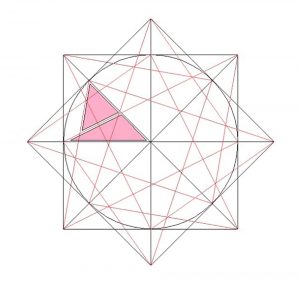
Construction by Peter van den Burg
So - let’s play! Let's look at those three geometric solutions for approaching this circle.
Firstly, let's look at a reconstruction by researcher Peter van den Burg. Peter’s solution to the geometry of this formation is very elegant, using two squares (or an 8-pointed star) containing the circle of the formation. This in turn gives the additional angles and intersections needed to create those two different triangles. You can see these lines in red on his diagram. This is a great solution, I like the use of the 8-pointed star, it feels in keeping with the sprit of the design.
Now, let’s turn to our second solution by researcher Bert Janssen. Bert’s solution is a little more complex and uses division by 24 to achieve the design. Bert sets out his division by 24 using a series of 6 overlapping squares contained by the perimeter of the circle (6 x 4 = 24). These squares provide the angles and intersections needed to create the design. Once again the square is central to the solution of his reconstruction. Bert’s approach is clever and feels eminently practical. It’s no less accurate than Peter’s - but has a very different feel.
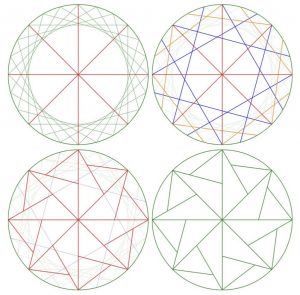
Construction by Bert Janssen
Last - but my no means least - is a very different approach by researcher Zef Damen. Rather than use the square, Zef approaches the design using the circle. Eight circles, half the diameter of the containing circle, are used within an octagon to create the design. Again this is a very elegant solution and feels markedly different to the previous two. In this approach there is no recourse to the square at all, circles and an octagon do the trick. Once again, this method is just as accurate as the other two.
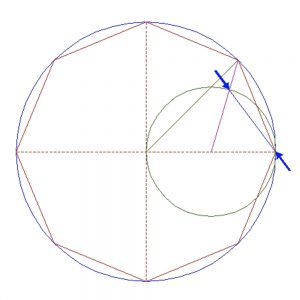
Construction by Zef Damen
Just to reiterate, there is no right or wrong here - each method works, all are equally accurate. I have taken the time to try all three and it was a fascinating experience - each method had a feeling entirely of it’s own. This is the joy of geometry, there are many paths to the same destination, each is worthy, each has something to teach. If you were to ask me for a favourite, I couldn’t tell you, I loved them all. Which did I use to create my own painting? I’ll never tell!
Periodic Renewal
Eight, according to the mathematician and geometer Michael Schneider, is the number of ‘Periodic Renewal’ - back at the beginning, but simultaneously somewhere new - this seems incredibly apt for the first circle of a new season. Each summer the crop circle phenomenon makes itself anew, but always offers us something new - repeating designs are so rare as to be virtually insignificant, the unremitting variety of design over the years is breathtaking.
Time, Timing and Breath
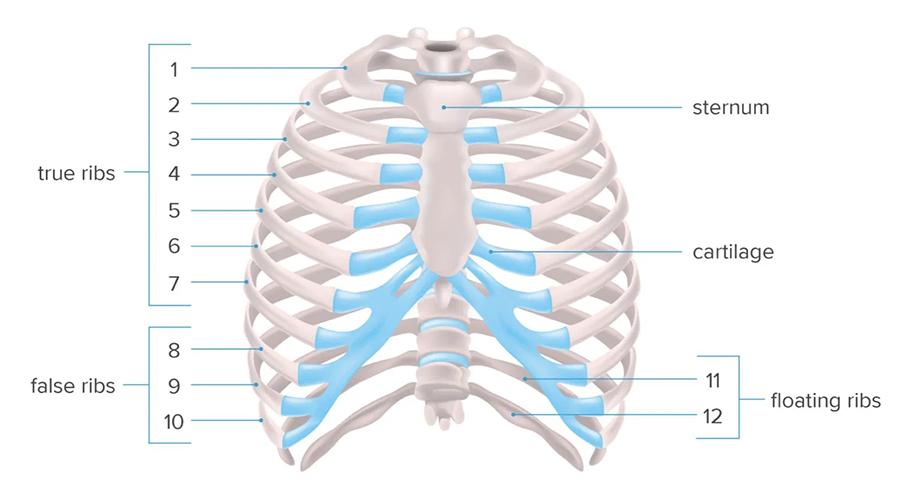 Twenty-four is a different numerical entity entirely. We perhaps most associate it with the number of hours it takes for our planet to rotate once on its axis - the hours in one day and one night. So maybe there is something about time, or timing in this circle? Again this feels apt as it is the first circle of a new season.
Twenty-four is a different numerical entity entirely. We perhaps most associate it with the number of hours it takes for our planet to rotate once on its axis - the hours in one day and one night. So maybe there is something about time, or timing in this circle? Again this feels apt as it is the first circle of a new season.
But the association I like best is that we have 24 ribs in our ribcage (2 sets of 12). There is something about breath and breathing here - once again this is apt. The appearance of this circle breathes new life into the phenomenon and simultaneously into a new crop circle season. The theme of breath also ties in with the idea of the pinwheel - which you can also use your breath to spin.
As an opener of the season this circle has it all; in form, in symbolism and in geometry.
Here we go again - have a great 2021 season!
By Karen Alexander May 2021
Thanks & Credits
This article would not have been possible without the generous help of a handful of very important people. I would like to thank some of my crop circle cognoscenti for their help in forming these ideas.
Steve Alexander & Peter van den Burg
Text by Karen Alexander.
With special thanks to Peter van de Burg for his thoughts, perspectives and analysis. You can see more of his great work on his Facebook page Geometry of the crop circles.
Thanks also to Bert Janssen and Zef Damen
Date
10.05.2021
Crop
Oilseed Rape (Canola)
Visiting
No permission has been given to enter this circle.
Google Maps Link


